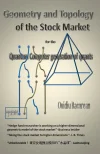- Joined
- 9/8/14
- Messages
- 7
- Points
- 11
From simple to complex, the book presents familiar financial concepts like stocks, market index (Dow Jones Industrial Average), algorithmic trading, to name just a few, in a manner that have never been experienced before. The reader is taken to a journey throughout a financial mathematics world that it seems detached from the 22nd century science.
http://www.amazon.com/Geometry-Topo...=sr_1_1?s=books&ie=UTF8&qid=1409632543&sr=1-1
http://www.amazon.com/Geometry-Topo...=sr_1_1?s=books&ie=UTF8&qid=1409632543&sr=1-1
